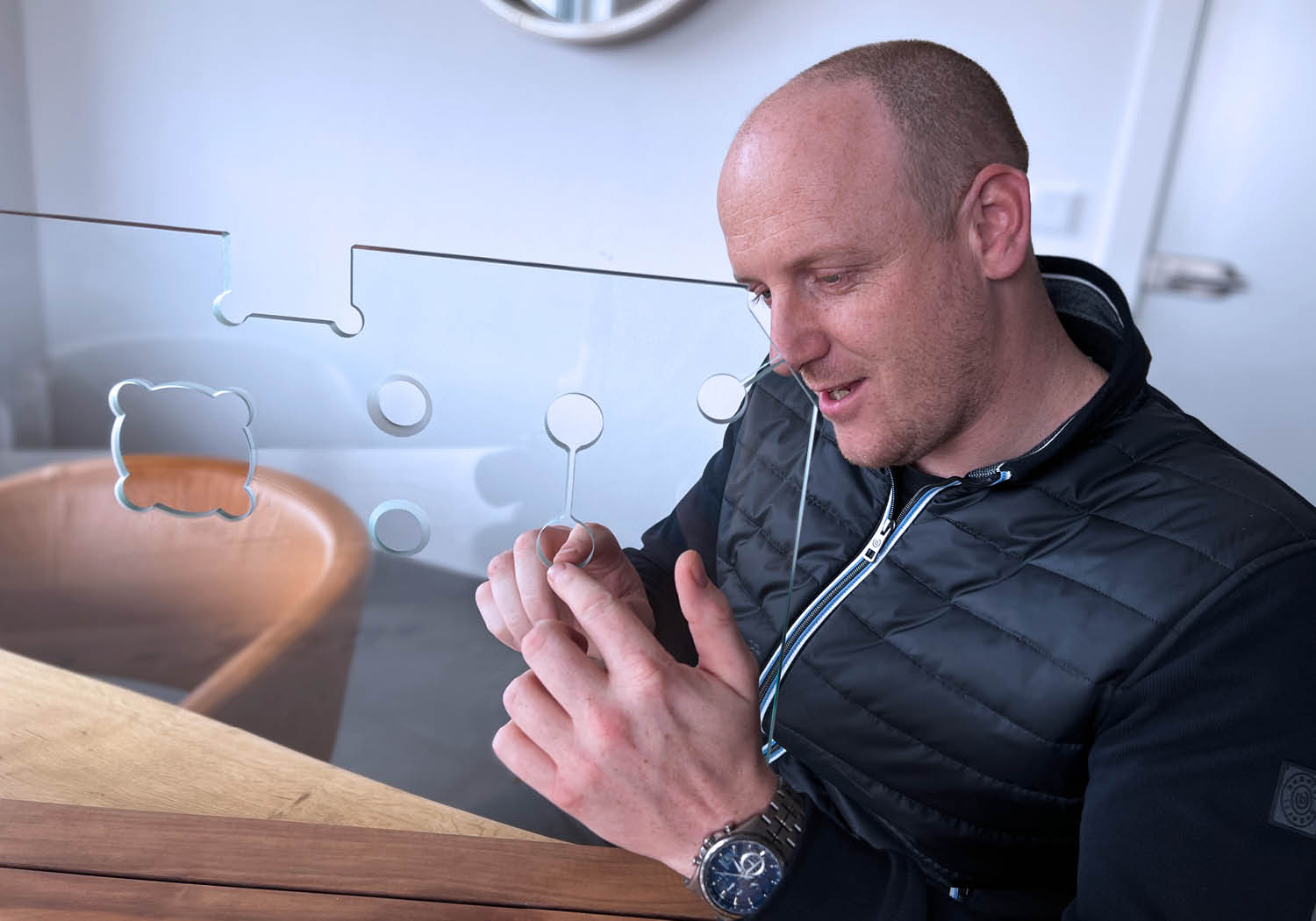Thomas Haan:
- After waterjet cutting it cannot be tempered directly
- The waterjet cut will scratch the ceramic rollers in the tempering furnace
Based on 10 years of customer experience, this can clearly be denied. The cut edge in waterjet cutting of glass is cloudy, rough and precise and therefore technically does not need to be processed before the tempering process. Additional grinding or polishing is of course possible and may be desired in order to obtain an even finer edge quality.
- Maintenance is difficult and intensive
The waterjet system is easy to service, only standard parts are installed. Often there is a lack of experience and there is a fear of new things. Of course, we provide training during commissioning and every customer receives free technician training from Uhde. Christoph Schmitt adds on the topic of maintenance: High-pressure technology is a reliable technology. In addition to the classic maintenance procedures for oil hydraulics, the maintenance work is essentially limited to the replacement of the high-pressure seals and non-return valves.
Thomas Haan: Instead of buying diamond tools (and energy to operate the spindle), you have to invest in energy, water, cutting sand and wear parts. When compared directly, you can see that waterjet technology is faster, more flexible and cheaper. To calculate the exact costs, you have to take into account the price of energy, sand, water and maintenance costs. Basically, it can be said that for more complex cut-outs such as Mickey Mouse or socket cutouts, the waterjet is much cheaper and faster than conventional drilling and milling. This is the opposite for simple holes with countersinks. In comparison, you also have to take storage costs and tool management – sharpening, exchanging, testing – into account.
For long-term use of water jet technology, fresh water is required, which is reused via an efficient water purification system – e.g. the systron SWR300. This sustainable reuse of water contributes to the environmentally friendly nature of the process.














